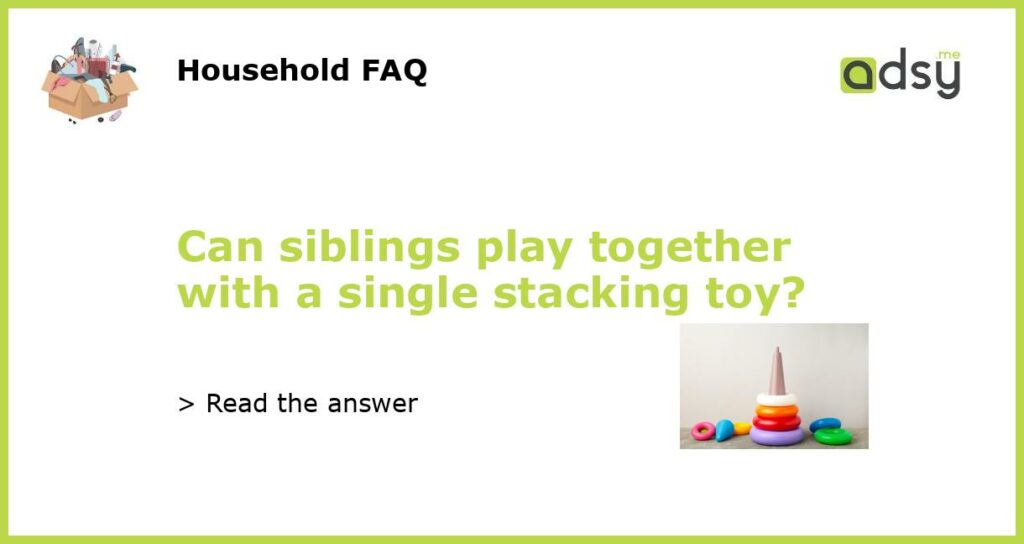Yes, siblings can play together with a single stacking toy
Siblings often enjoy playing together, and using a single stacking toy can be a great way for them to engage in cooperative play while developing their cognitive and motor skills. Stacking toys are not only fun but also have several educational benefits that can enhance a child’s overall development.
Cognitive development through problem-solving
When siblings play together with a stacking toy, they have to analyze the shapes, sizes, and colors of the stacking pieces. This encourages them to think critically and problem-solve as they figure out which piece goes where. They will learn about spatial relationships, develop their ability to categorize objects, and enhance their visual perception skills.
Motor skills and coordination
Playing with a stacking toy requires children to use their fine motor skills and hand-eye coordination. As siblings take turns placing the stacking pieces on top of each other, they improve their dexterity and learn to control their movements. This activity also helps strengthen hand muscles and improves finger grip, which is crucial for later tasks such as writing.
Promoting social and emotional development
Playing with a stacking toy together can foster positive social interactions between siblings. They have an opportunity to practice sharing, taking turns, and cooperating. This cooperative play supports the development of essential social skills such as communication, empathy, and teamwork. Siblings can also learn to negotiate and problem-solve together, encouraging empathy and understanding towards one another.
Encouraging creativity and imagination
A single stacking toy can be used in various ways, giving siblings the opportunity to exercise their creativity and imagination. They might build a tall tower or create unique structures by combining the stacking pieces in unconventional ways. This type of open-ended play promotes divergent thinking, imaginative play, and allows for individual expression.






